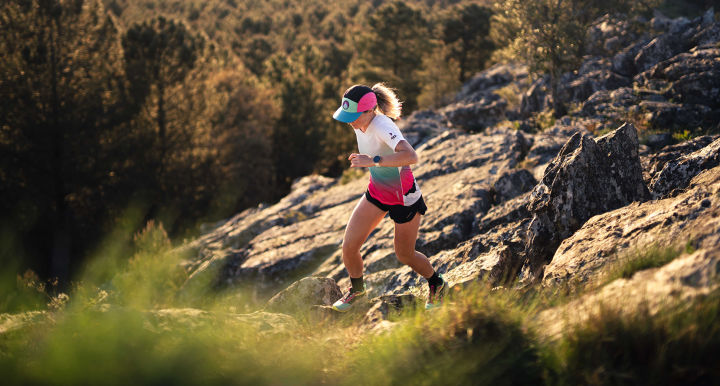
Develop your trail running skills
Running downhill
Have you built up good technique and stamina when running uphill? Have you reached the top of the mountain when climbing? Don't forget that you have to figure out how to get back down. That's one of the joys of trail running! The following is our advice on running downhill and harnessing the terrain to your advantage.
Try running with the front part of the foot
When you go down a flight of stairs, you always put your toes first on the step. It's easy to do in an urban environment! It is exactly the same when you run downhill in nature or in the mountains.
Better shock absorption
By combining your leg movement and landing on the front of the foot, you get better shock absorption. A good pair of trail running shoes cannot replace the absorption generated by a good foot placement.
Avoid getting hurt
Going downhill heel-first is very unstable and increases the risk of injury. Many trail running-related sprains are caused by landing on your heel while running downhill.
Less shock absorption also means sore muscles and soreness during recovery. A good warm-up and stretching will go a long way.
How can you improve your foot placement?
Lower the center of gravity and move it slightly forward.
With this exercise you can learn how to master the hill:
- extend your arms to keep your balance
- let yourself fall forward
- run with the center of gravity well in front
- try to land on the front part of the foot
When you start trail running, you can include some downhill technique sessions in your training program. You will quickly make progress and with a little practice you’ll feel more relaxed.
And the upper body?
The upper body should help you keep your balance. To make that happen, stretch your arms out and use them. For example, let your arms turn first in curves. Let the rest of the body follow the movement.
Build up a strong abdominal support with muscle strengthening workouts to gain stability. Since trail running gives your whole body a workout, don't forget to stretch your arms and back muscles!
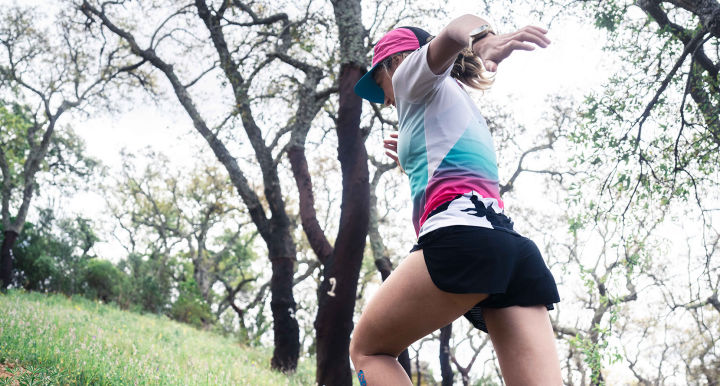
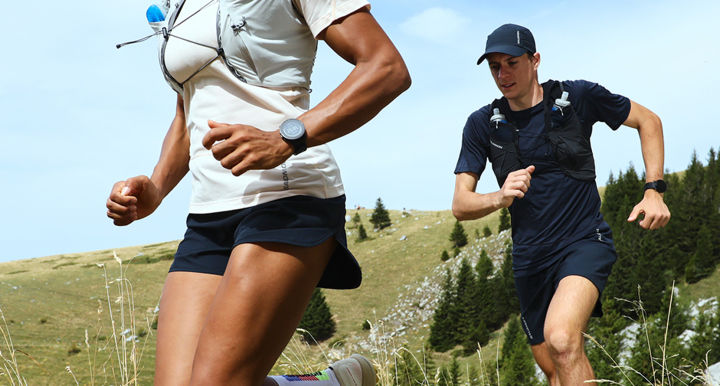
Take big steps
By taking big steps, you can better analyze the terrain and anticipate your footsteps. You will be more precise. The key to running faster downhill is to think ahead, be light and keep your balance.
Adapt to the terrain
When running in the mountains, you will encounter a highly varied terrain. In the Ultra-Trail du Mont-Blanc, for example, runners cross dry terrain with rocks, as well as grass, asphalt, snow and mud if there's a storm. All during one and the same race!
Running in mud
Stay in the mud if it's not too deep. Avoid slipping on rocks and roots.
Running downhill in dry terrain
In dry terrain, you can place your weight on rocks embedded in the ground. Avoid slippery traps, e.g. areas with gravel or pebbles.
Alternate between brisk walking and running
Adjust your pace to the terrain, just like uphill. Stay confident and walk the steepest parts. Have fun and run all the way down the hill on undulating terrain, even if you have a start number. Remember, when it comes to trail running, it's always better to be careful and feel good than to run fast!
When you master the technique correctly, you know how to manage both the foot placement and balance. You can also analyze the terrain better if you are used to running downhill. Relax, don't forget to breathe properly and enjoy downhill running!
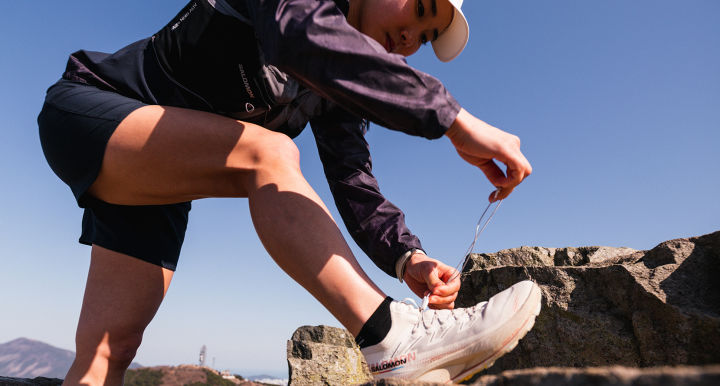
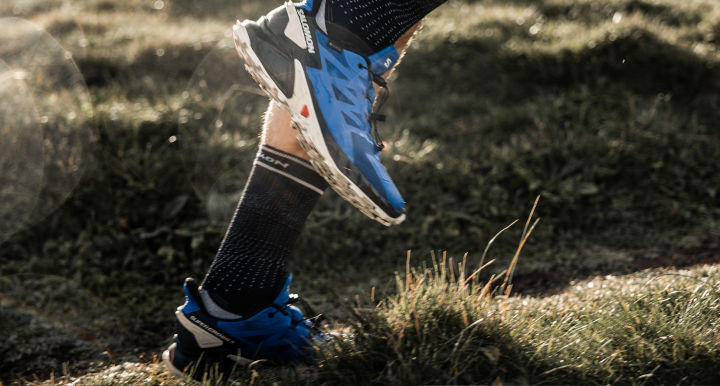
What equipment do you need for a trail running race?
Have you found a good pair of trail running shoes? Do you feel comfortable in your running clothes and do you know how to use your GPS watch? Bring only the essentials to a trail running race to travel light, without neglecting your safety. Here's our advice for preparing your safety equipment!
Trail backpack
The choice of trail pack or vest is very important. It should hold all your trail gear without getting in the way when you run. Choose a volume that is appropriate for your distance and the equipment you carry with you. Typically it's 2 liters for short-distance trails and 10 to 15 liters for long-distance races and ultra-trails. Use the many pockets of your gear to access your equipment without having to stop. A zippered pocket keeps your keys or documents safe.
What equipment do you need to bring to a trail running race?
Below is a checklist of the essentials:
- Water/energy drink
- Food, snacks, gels
- Headlamp if needed (recommended)
- Security blanket
- Phone
- Windproof jacket
Carry your water with you
You normally use soft bottles that are placed in the shoulder straps. You don't have to take them out to drink while running or take off your backpack to fill the bottle. You can also use a water reservoir on your back or a regular water bottle bag for short distances.
Water or an isotonic energy drink? Figure it out as you train and stick to it as you run.
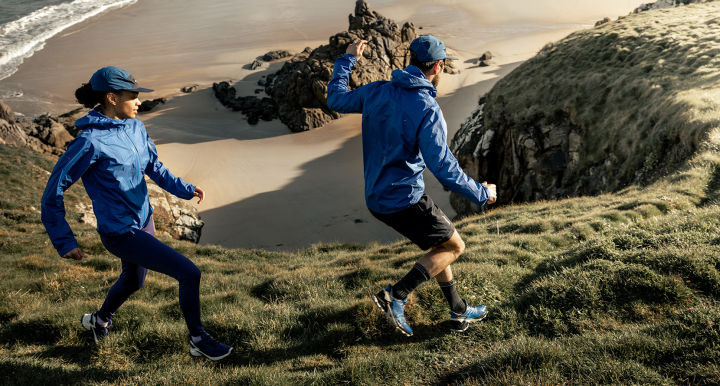
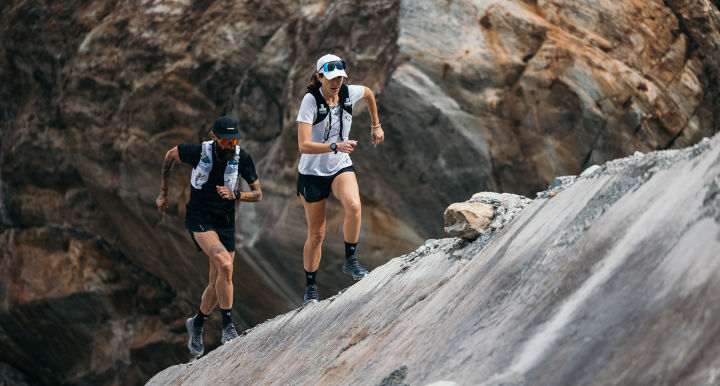
Food for trail running
You definitely need to eat during your trail run. Carry some energy snacks or gels in your pocket that you can grab while running. Again, find out what you like eating during your trail running workout to make sure you can tolerate the taste and your body can handle it. It's hard to eat while running, especially during a fast-paced race. You should therefore practice eating while running so that you can eat properly during the race.
Headlamp
When you're heading out early in the morning or crossing the finish line in the evening, you need a headlamp. You don't have to bring it during all your races, but you do need to bring it when it's dark. For your safety, we recommend that you always keep it at the bottom of your bag, when training or during a race in the mountains.
Security blanket
A security blanket is a staple in your backpack during some races. If you have to interrupt your run, it can protect you from cold or heat. It is ultra-light and a safety item that, in our opinion, should always be kept at the bottom of your bag.
Cell phone for trail running
There is usually a pocket designated for your cell phone in your trail pack. In an emergency, it is good if it is easily accessible ... or if you just want to take pictures of the landscape! Don't forget to protect your cell phone in a plastic bag or case if it is not waterproof. Some runners use a waterproof wristband.
Jacket
Take a waterproof jacket with you in case of bad weather. You can adapt it to the weather: minimalistic, ultralight and breathable, or extremely waterproof. Softshell can keep you warm when it's cold. Put the jacket on over your pack without stopping.
Find the right equipment as you train and concentrate only on the race on the day of the event.